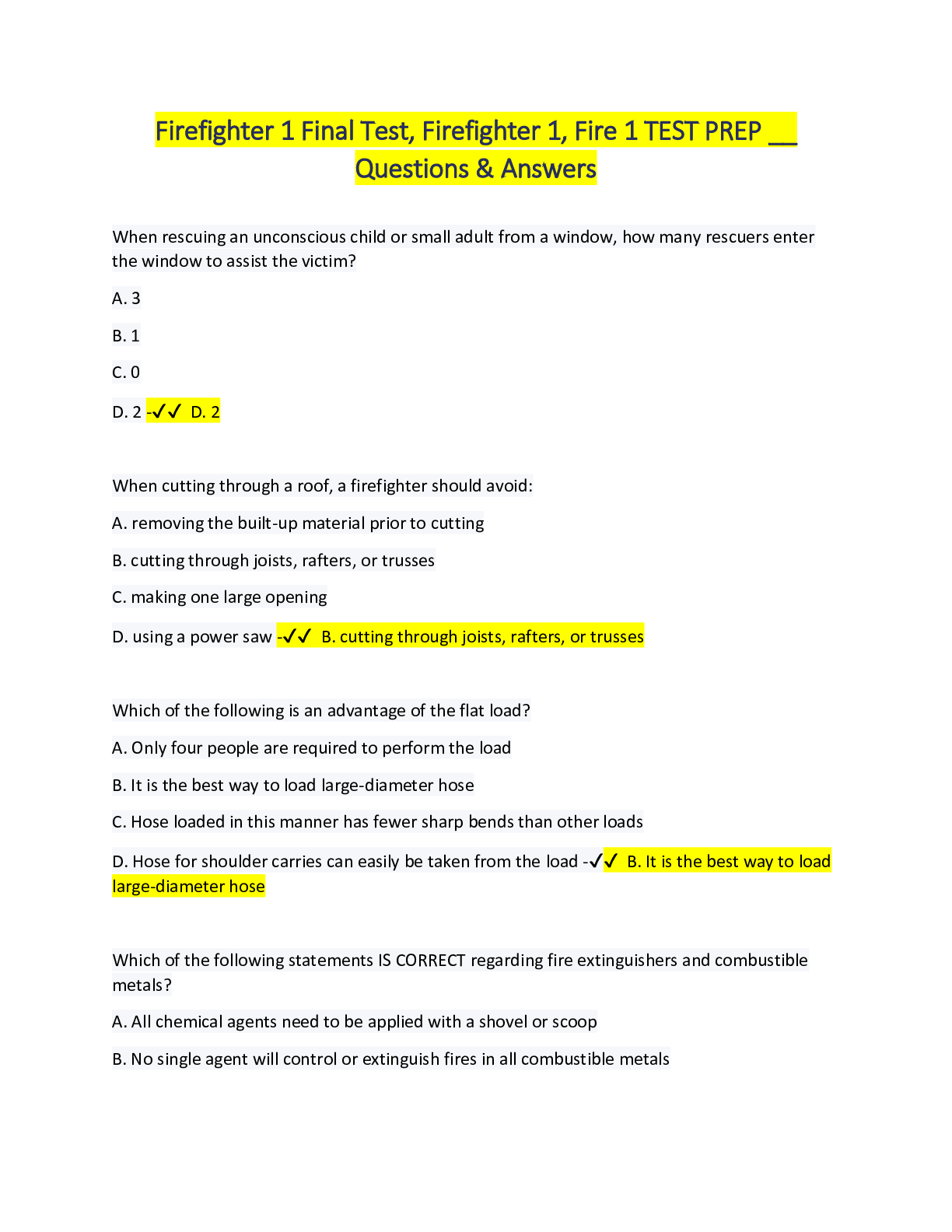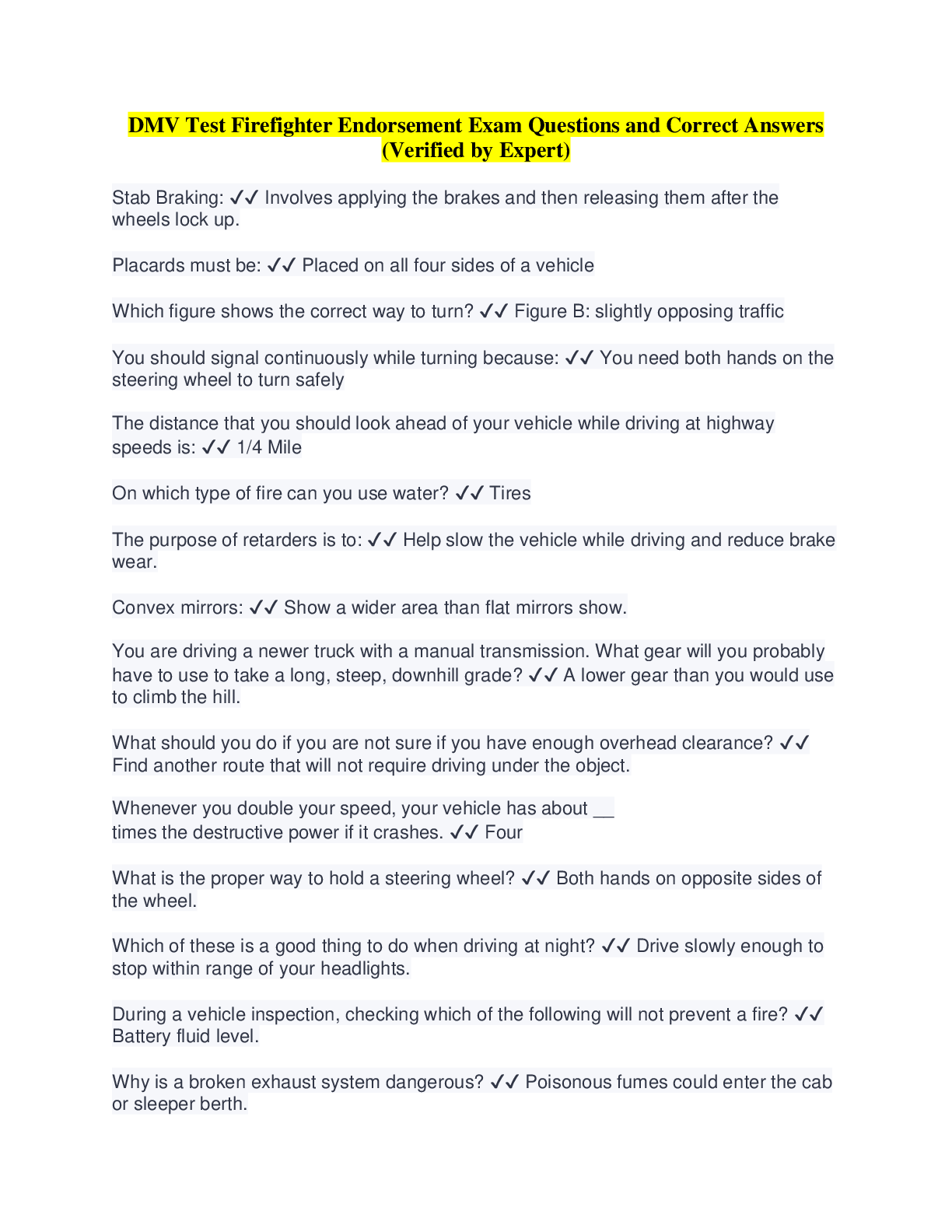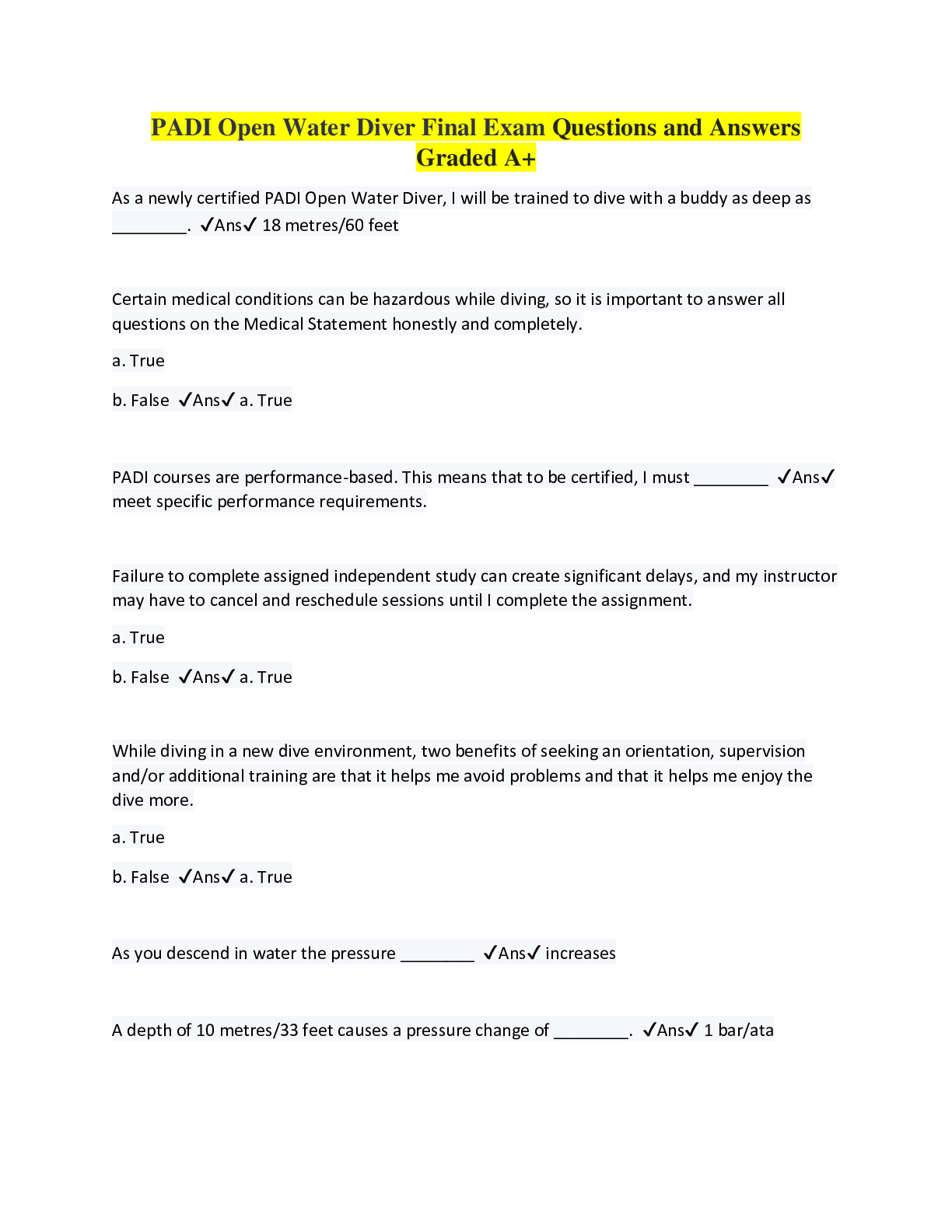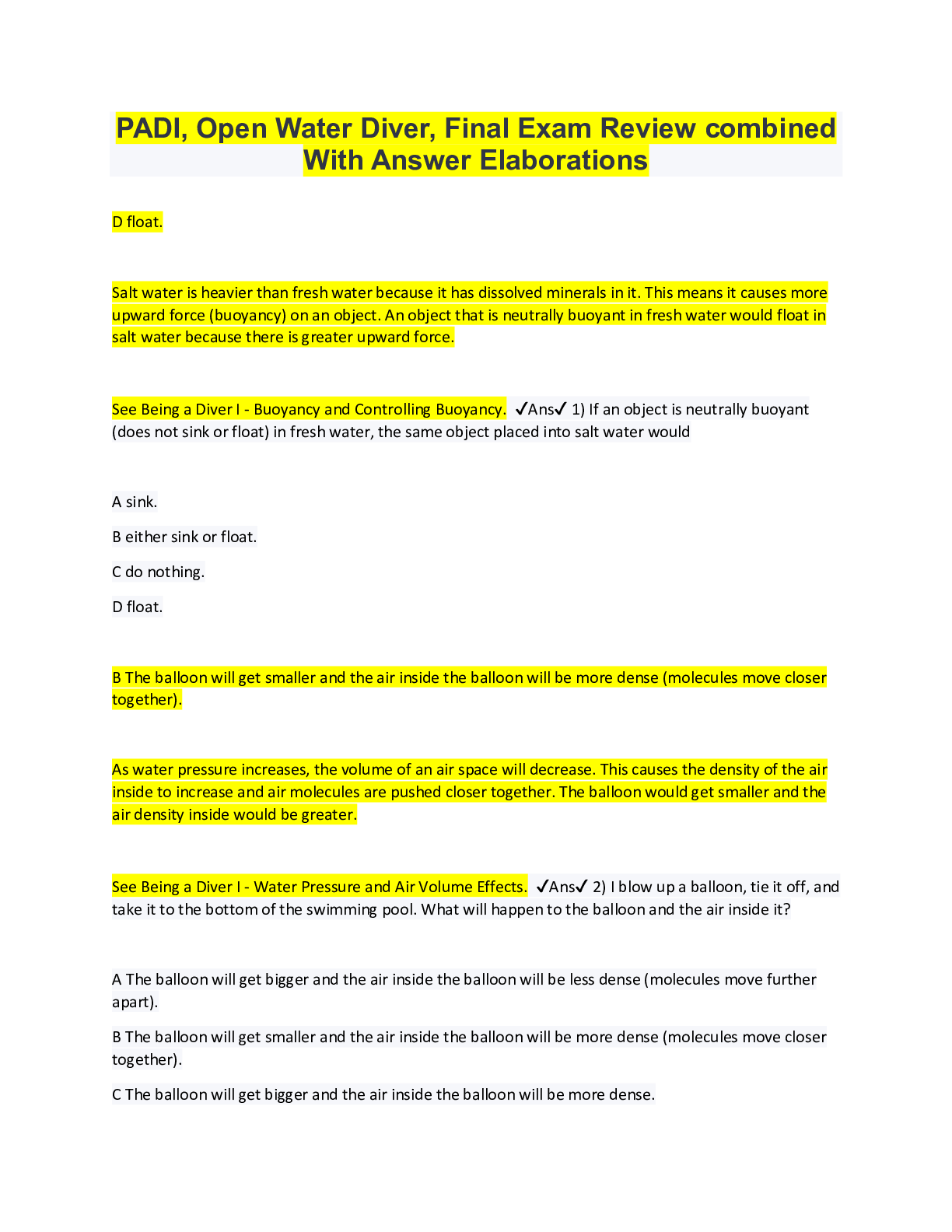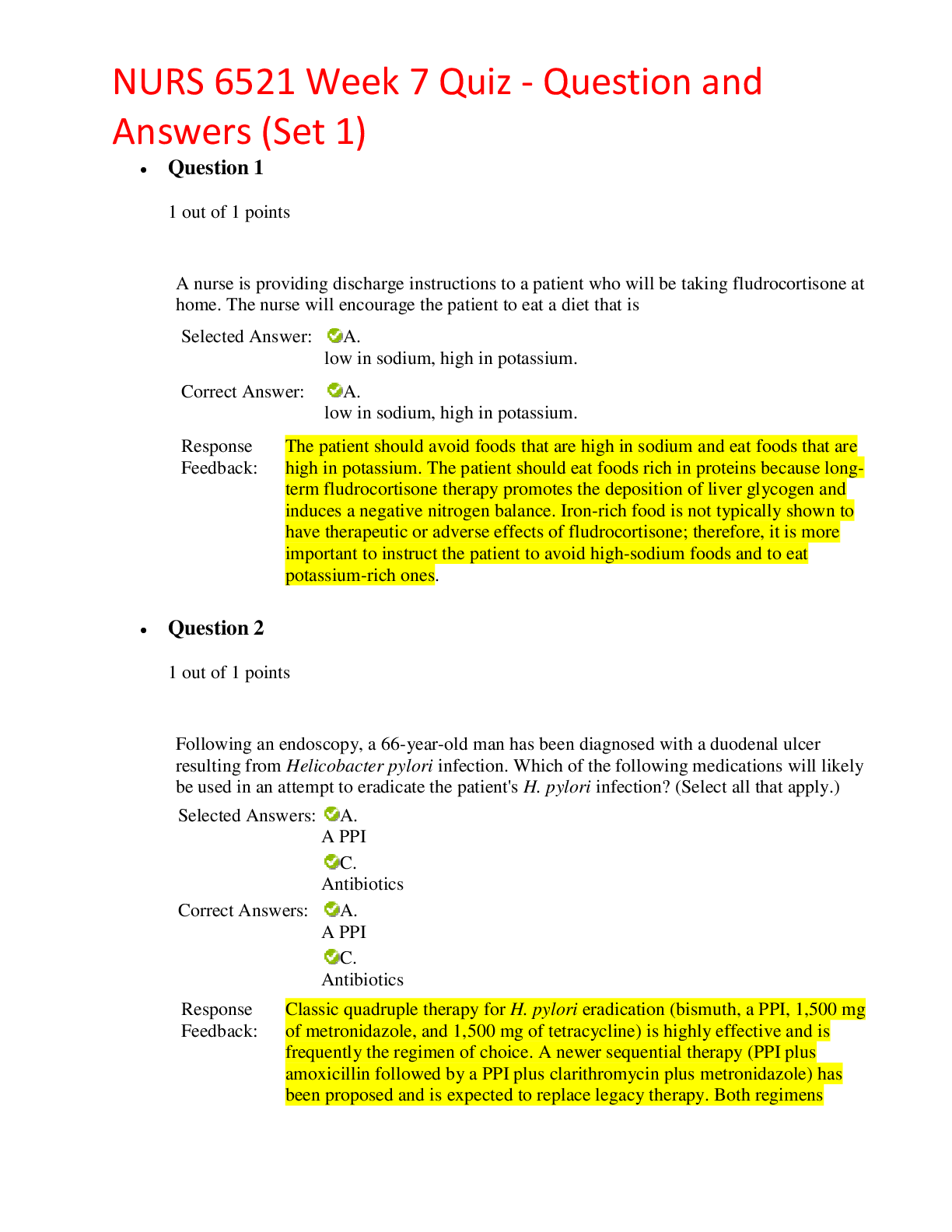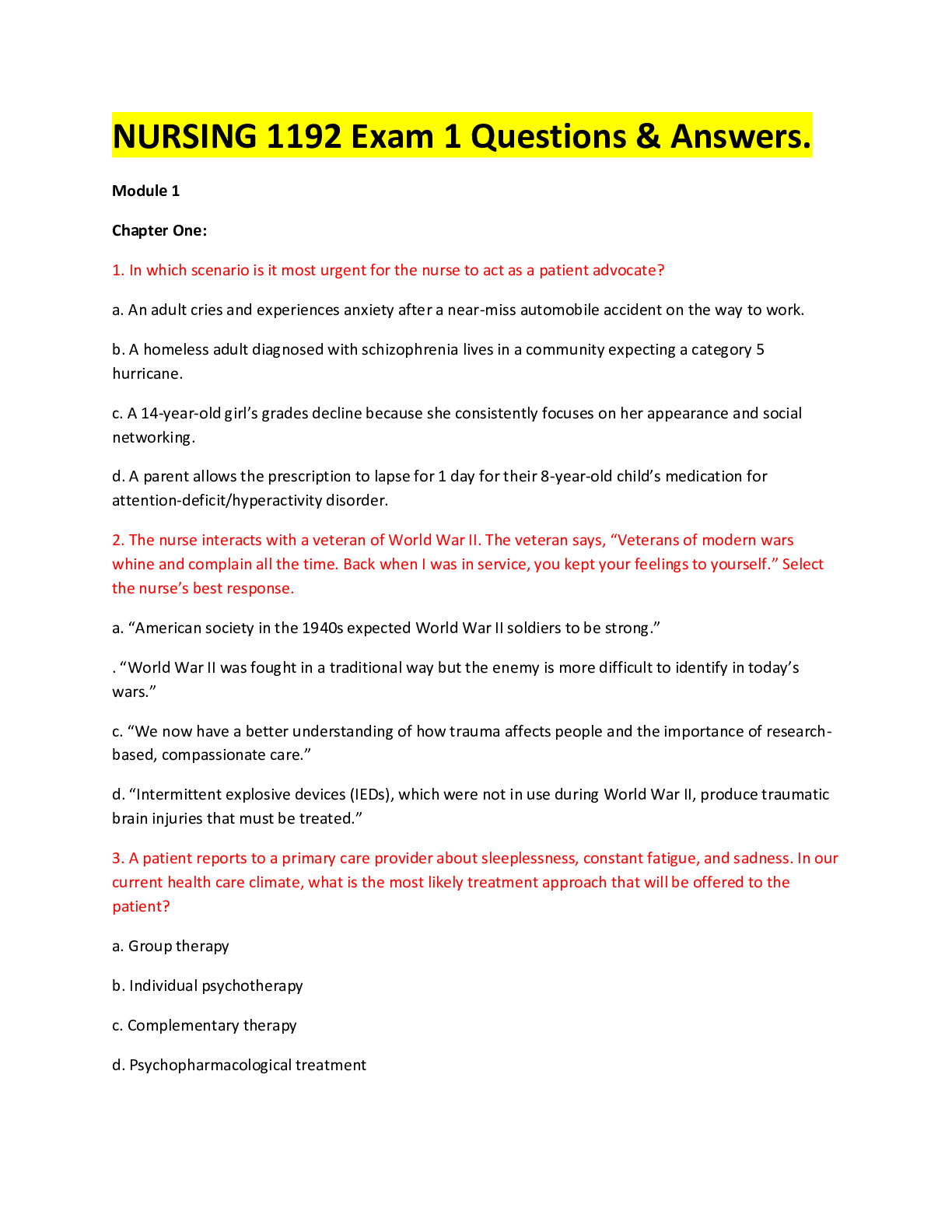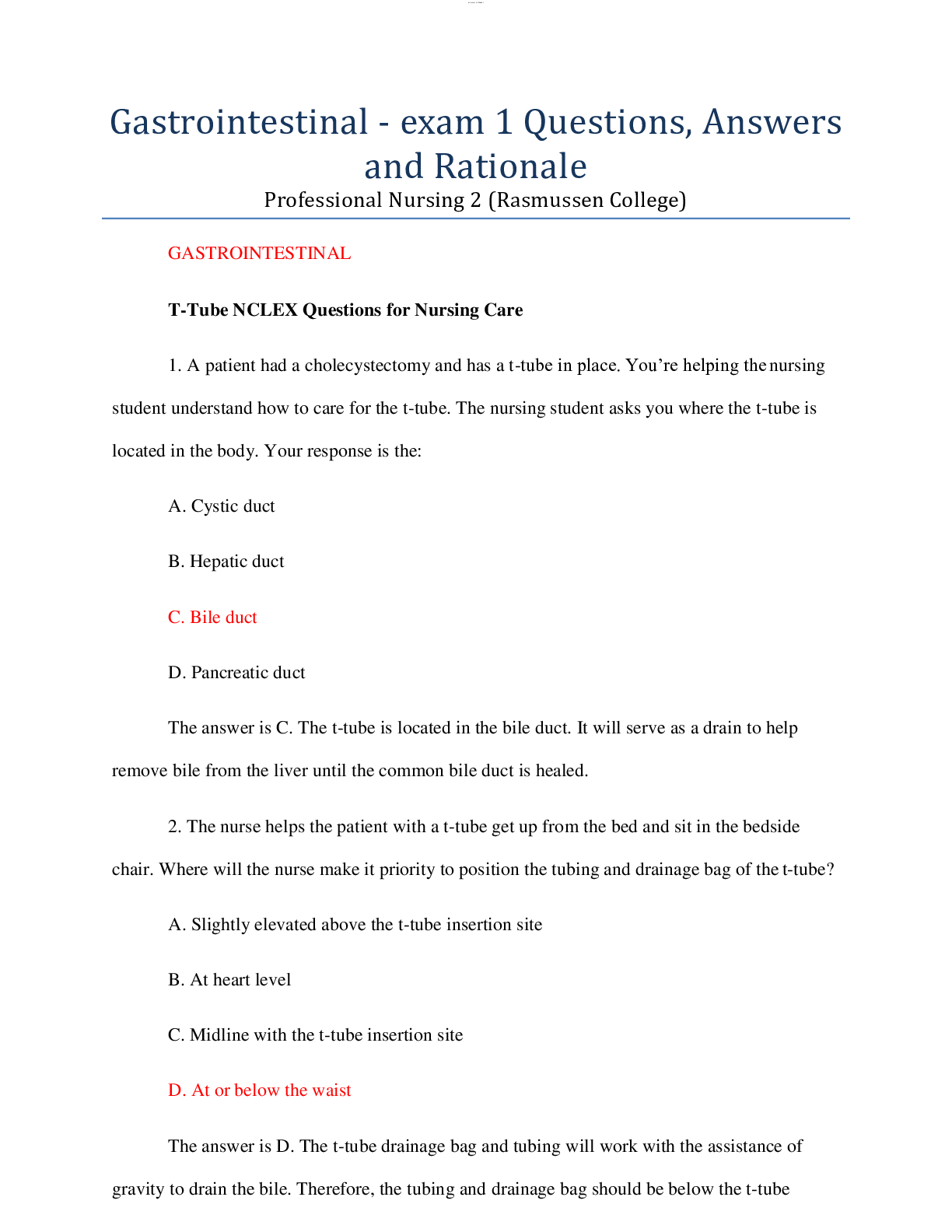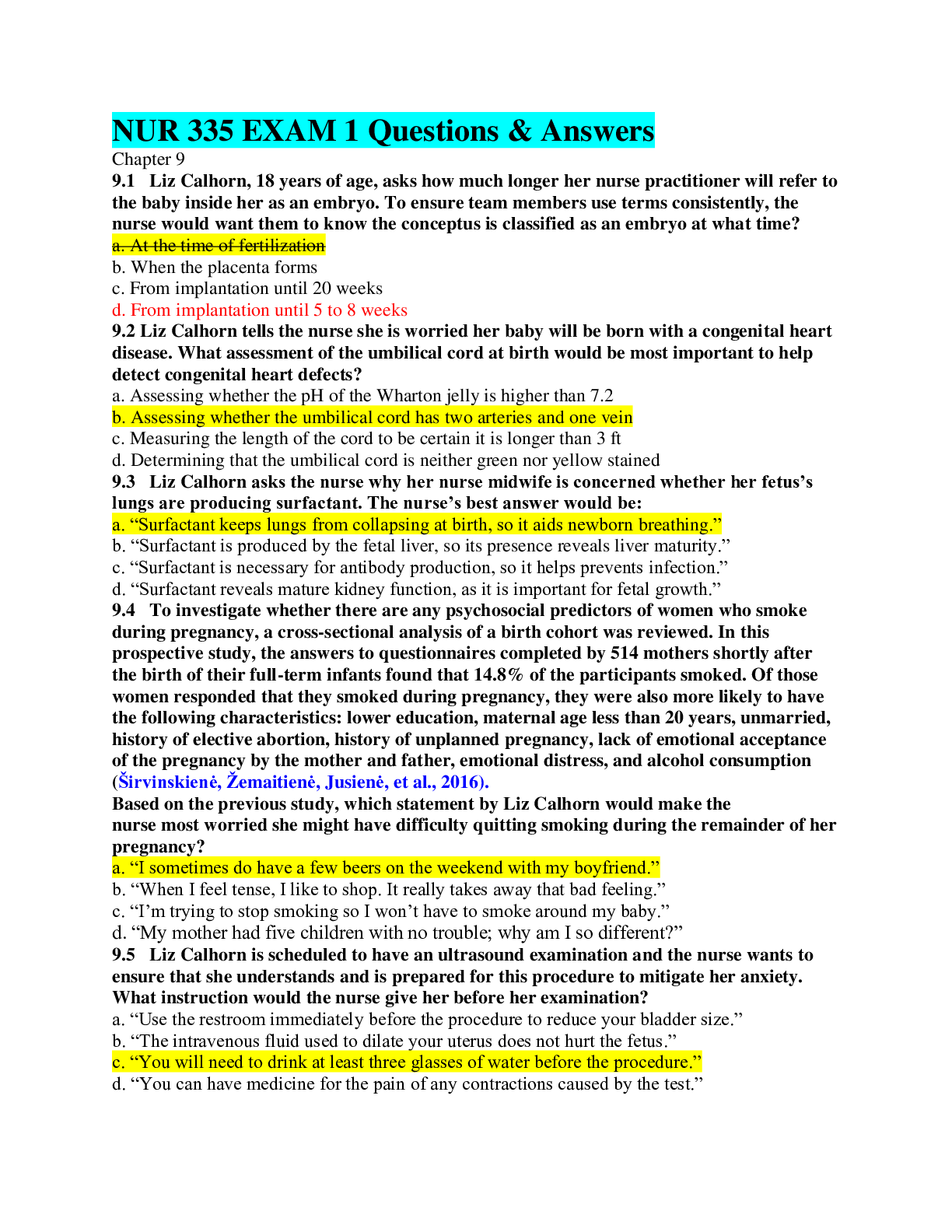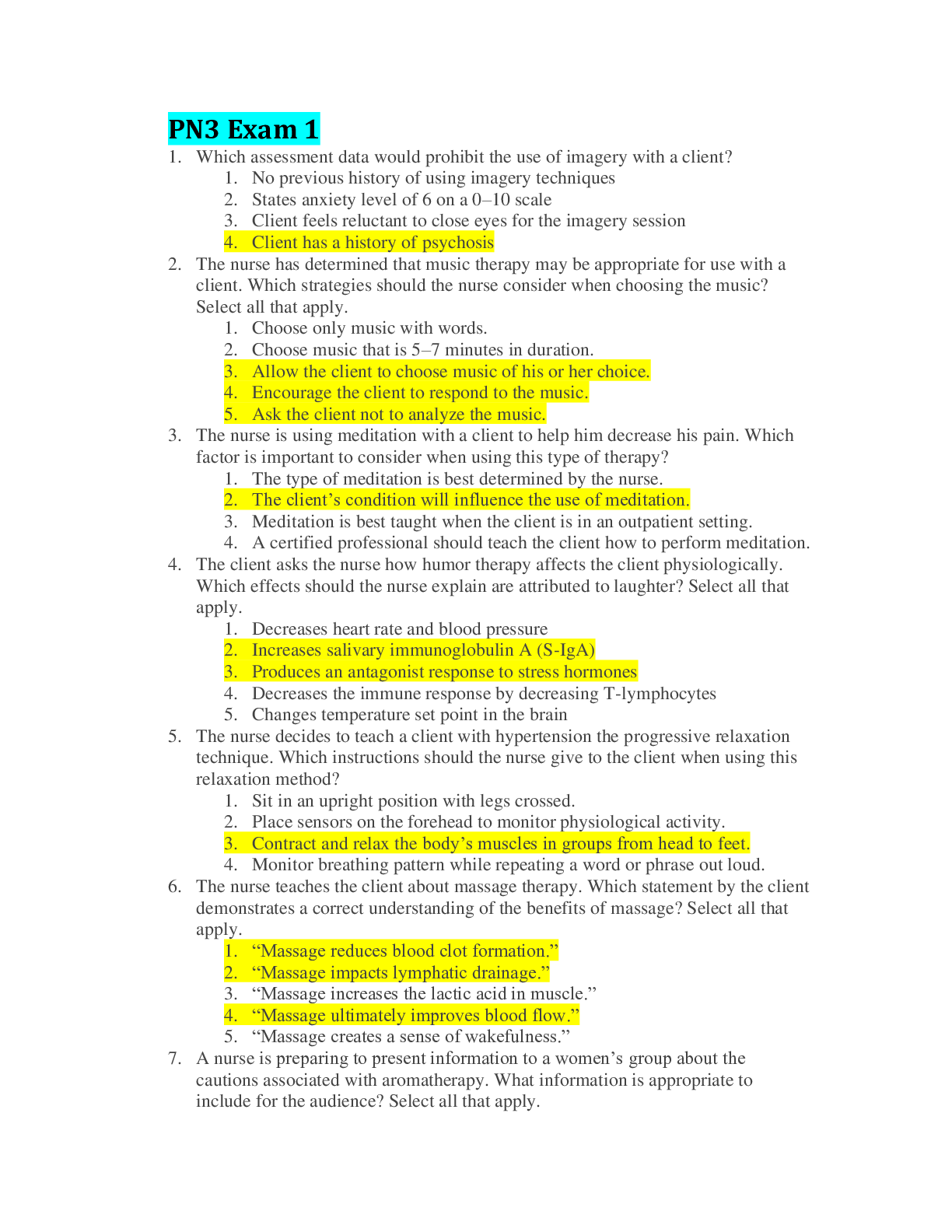*NURSING > QUESTIONS & ANSWERS > Hurst Readiness Exam 1 Questions with Correct Answers and Complete Solutions (All)
Hurst Readiness Exam 1 Questions with Correct Answers and Complete Solutions
Document Content and Description Below
The nurse is teaching a group of pregnant women about hormonal changes during pregnancy. The nurse recognizes that teaching was success- ful when the women identify which hormone as causing amenorrhea... ? 1. Progesterone 2. Estrogen 3. Follicle-stimulating hormone (FSH) 4. Human chorionic gonadotropin (hCG): Rationale 1. Correct: Progesterone causes amenorrhea. 2. Incorrect: Estrogen renders the female genital tract suitable for fertilization. 3. Incorrect: This stimulates the growth of the graafian follicle in the ovary. 4. Incorrect: This is the hormone present in urine for pregnancy test 2. The client is admitted to the hospital following a motor vehicle accident and has sustained a closed chest wound. The nurse notes paradoxical chest wall movement. Which problem does the nurse suspect? 1. Mediastinal shift 2. Tension pneumothorax 3. Flail chest 4. Pulmonary contusion: Rationale 3. Correct: Hallmark of flail chest is paradoxical chest wall movement. This is often described as a see-saw effect when observing the rise and fall of the chest. 1. Incorrect: A closed or open tension pneumothorax results from the lung collaps- ing and air entering into the pleural cavity. This results in pressure shifting toward the unaffected pleural cavity. 2. Incorrect: Tension pneumothorax occurs when there is an accumulation of air in the pleural cavity. The client may exhibit dyspnea, tachycardia, or hypotension. 4. Incorrect: A pulmonary contusion usually results from blunt trauma. Bruising of lung would be demonstrated by pain but not paradoxical chest wall movement. 3. Which client can a nurse manager safely transfer from the telemetry unit to the obstetrical unit in order to receive a new admit? 1. Client admitted with possible tuberculosis (TB) awaiting skin test results. 2. Client diagnosed with seizure disorder. 3. Client with a new pacemaker scheduled to be discharged in the morning. 4. Client with a history of mild heart failure prescribed one unit of packed red blood cells for anemia.: Rationale 2. Correct: OB nurses would have the appropriate knowledge needed to care for a client with a seizure disorders, because they care for clients who have eclampsia (seizures). 1. Incorrect: This client might have tuberculosis (TB) and is not a good choice to move to the OB floor, because of the risk for transmission of an infectious disease. 3. Incorrect: This client is not the best one to be transferred to the OB floor, because these nurses do not routinely care for clients with a new pacemaker. The client is also likely to remain on a cardiac monitor until discharge. 4. Incorrect: This client is at risk for fluid volume overload since there is a history of heart failure and would require close monitoring while receiving a blood trans- fusion. 4. The nurse is teaching a group of clients who have reduced peripheral circulation how to care for their feet. What points should the nurse include? 1. Check shoes for rough spots in the lining. 2. File toenails straight across. 3. Cover feet and between toes with creams to moisten the skin. 4. Break in new shoes gradually. 5. Use pumice stones to treat calluses.: Rationale 1., 2., & 4. Correct: Rubbing from rough spots in the shoe can lead to corns or calluses. File the toenails rather than cutting to avoid skin injury. File nails straight across the ends of the toes. If the nails are too thick or misshapen to file, consult podiatrist. Break in new shoes gradually by increasing the wearing time 30-60 minutes each day. 3. Incorrect: Cover the feet, except between the toes, with creams or lotions to moisten the skin. Lotion will also soften calluses. A lotion that reduces dryness effectively is a mixture of lanolin and mineral oil. 5. Incorrect: Avoid self-treatment of corns or calluses. Pumice stones and some callus and corn applications are injurious to the skin. Do not cut calluses or corns. Consult a podiatrist or primary healthcare provider first. 5. When caring for young adult clients, which developmental tasks would the nurse expect to see? 1. Satisfying and supporting the next generation. 2. Reflecting on life accomplishments. 3. Developing meaningful and intimate relationships. [Show More]
Last updated: 2 years ago
Preview 1 out of 68 pages

Buy this document to get the full access instantly
Instant Download Access after purchase
Buy NowInstant download
We Accept:

Reviews( 0 )
$8.00
Can't find what you want? Try our AI powered Search
Document information
Connected school, study & course
About the document
Uploaded On
Dec 06, 2022
Number of pages
68
Written in
Additional information
This document has been written for:
Uploaded
Dec 06, 2022
Downloads
0
Views
105
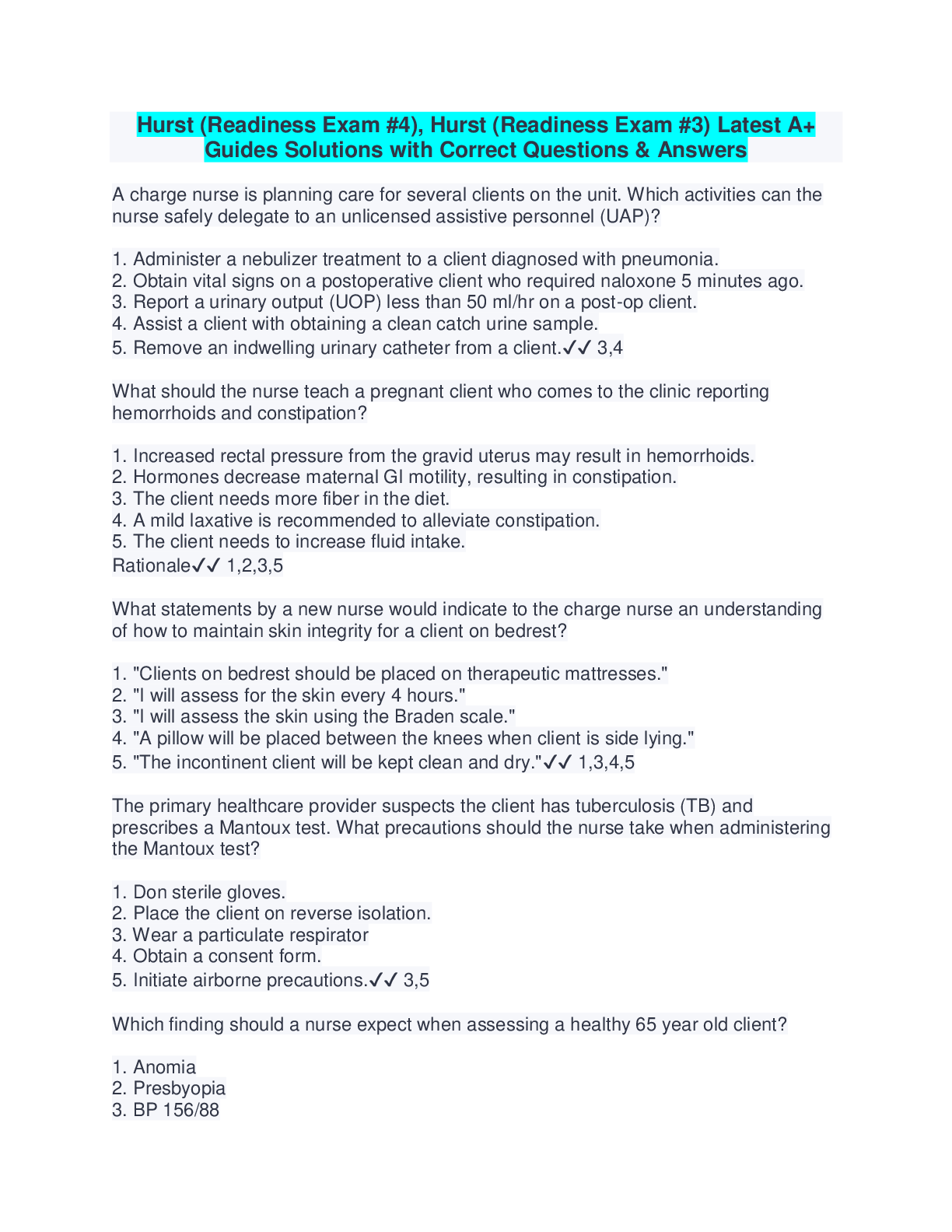


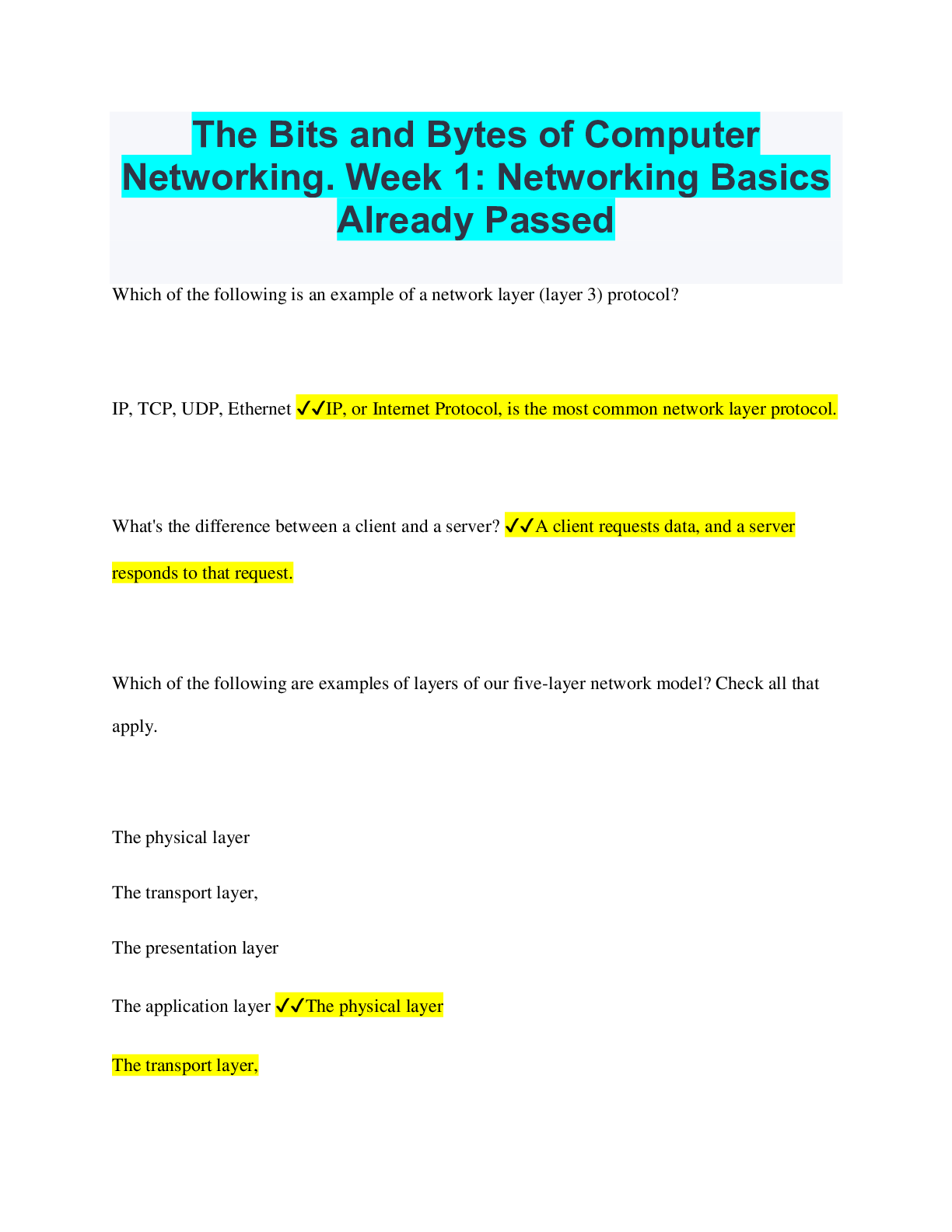
 Answered 2023.png)


